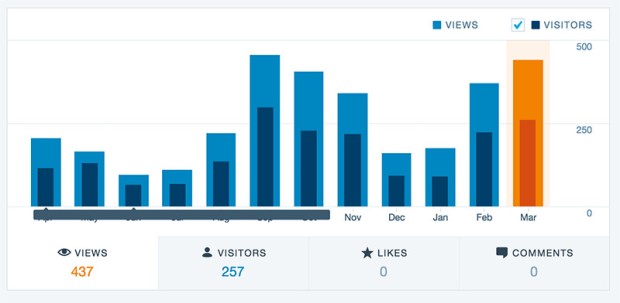The Accessibility Network at UC website has undergone several refreshes while I have been the Communications and Engagement Coordinator. The first iteration was a one-page informational site to get basic information out there about our program. This worked for a while, but we quickly came to realize that our audience (faculty and staff at the university) wanted more than just who we were; they wanted tips and techniques about how to complete accessibility techniques.
The second revamp of the site included just that:

Website screen grab illustrating the first refresh of the site, organized based on audience.
As you can see, this was a 5 page microsite, containing info about the program, and resources based on our audience. This also worked for a while, but there were a couple of problems with the organization. First, we had trouble defining what students really needed to know about electronic accessibility. Though the creation of accessible electronic materials impacts them, they are not expected to use any techniques themselves–at least not currently. Organizing the information by audience only exacerbated this problem.
The second was that each resource page–student, faculty and staff–contained the same information on each, with the exception of a minor addition here and there. This resulted in our resource pages existing as very similar sources of information. Additionally, who really was to say that faculty did not need to know about accessibility for websites or that certain staff didn’t need to know about universal design for learning.
Both these downfalls made me want to organize the information in a different way–but how? I set off on a journey researching how other universities (and sometimes government sites) organized their content. I kept a spreadsheet of what I liked about each site and based our new site on everything that stood out to me as being the best.

The second website refresh, shown here with the second page highlighted. The content is now organized by type of material the audience wishes to remediate.
As you can see from the screen grab above, I decided to organize all content based on what type of material the viewer wished to learn about. This theme is reiterated throughout the site. The main categories down the left-hand side of the page–Electronic Files, Digital Course Content, Websites, and Software/Applications–all lead to a main page about the content and a checklist to include accessibility in that type of file. All pages push the viewer towards the Best Practices, Tutorials or Workshops page through the use of a left-hand callout box. And, as illustrated in the example above, there is ample use of links to more information.
The organization of the microsite now leads the audience to as little or as much information as they wish to investigate. The many links help to tell the story of accessibility in different ways, so the visitor can learn through methods they feel most comfortable. The site pages now follow a more universal design for learning approach and, hopefully, appeals to a broader range of audiences, instead of a select few. This also allows the site to reflect the very techniques the program wishes to see incorporated into all possible electronic materials.













 In addition, I chose an online project management tool so team communication could be facilitated. I would assign a project number, enter it into our online project management system (at the time it was Liquid Planner), and fill in a framework of tasks that needed to be completed by the student interns. This way they would know exactly what was expected of them and if they had questions they could clarify.
In addition, I chose an online project management tool so team communication could be facilitated. I would assign a project number, enter it into our online project management system (at the time it was Liquid Planner), and fill in a framework of tasks that needed to be completed by the student interns. This way they would know exactly what was expected of them and if they had questions they could clarify.